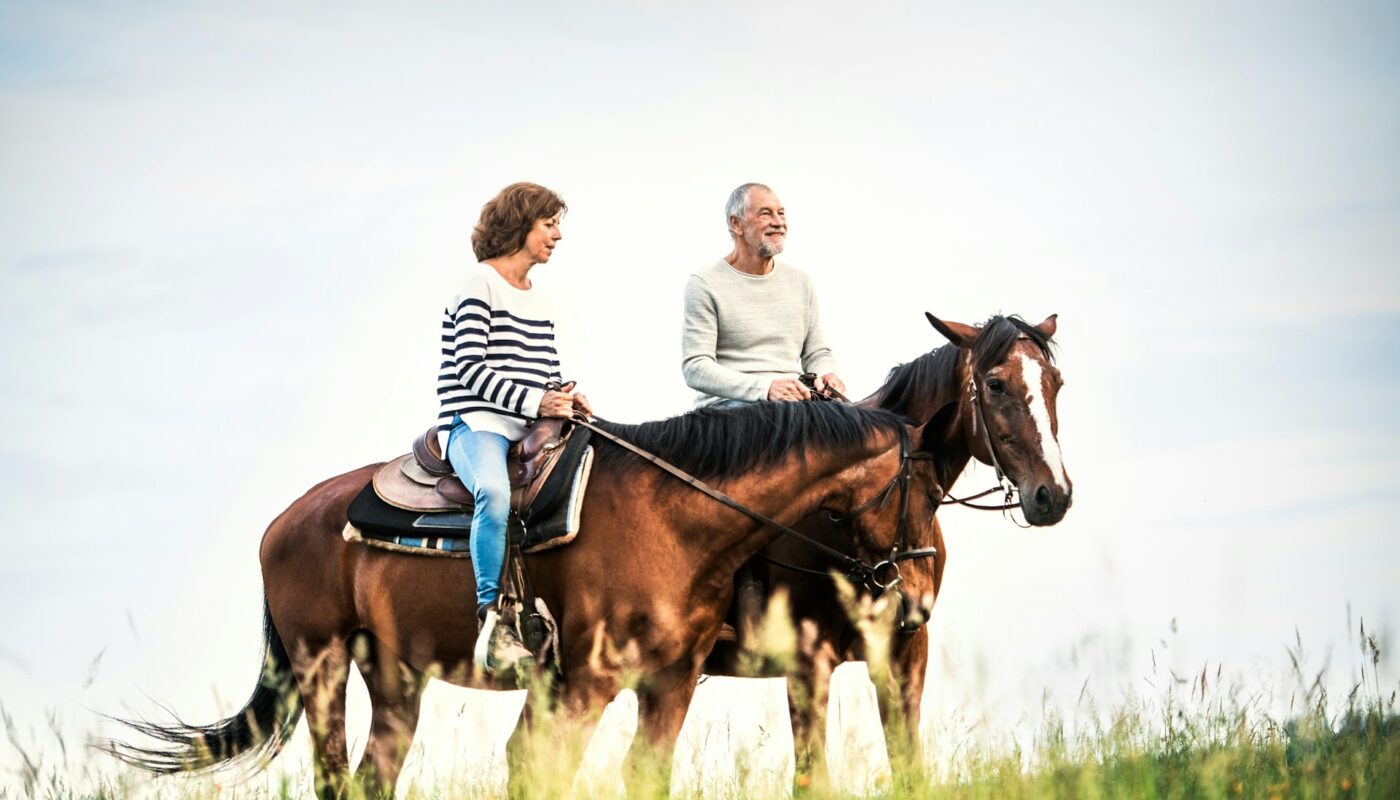Horseback riding is a thrilling and enjoyable activity that provides immense pleasure and also serves as an excellent workout. The rhythmic motion of riding a horse engages various muscle groups, improving balance, core strength, and coordination. It is a great way to stay active and maintain physical fitness. However, it is essential to acknowledge that horseback riding risks exist.
Table of Contents
Horses Can Be Unpredictable
Horses’ unpredictable nature, size, and strength can lead to potential accidents or injuries. To minimize potential dangers, it is crucial to prioritize safety by wearing proper riding gear, receiving proper training, and being mindful of the horse’s behavior. Despite the risks, the exhilaration and numerous health benefits make horseback riding an unforgettable and fulfilling experience.
Every one of us needs a break or a refreshment to recharge our lost bliss and energy. And the best way to enhance your energy is to give yourself time and space. And nothing can be more helpful than going on a trip. Far from the urban desert, the calmness of nature awaits our entry into the mountains and woods. Bryce Canyon National Park is the perfect getaway destination for you. It is situated in southwestern Utah, about 80 km northeast of and 1000 feet higher than Zion National Park.
But this trip could be more entertaining by replacing modern vehicles with horses. Horseback tours of Bryce Canyon National Park could be one of the most desired plans. The horseback ride in Bryce Canyon can bring better harmony to your adventurous journey.
And as is known to all, exploration and adventure are not easy jobs. Everyone needs to do proper research before planning a horseback riding tour. Otherwise, it could be very risky for your life. You need to take proper safety measures before going on a horse ride.
Horseback Riding Can Involve Risks
The Centers for Disease Control and Prevention (CDC) identify horseback riding as having a higher chance of injury than any other recreational activity; common types of injuries are falls, kicks and bites, crushing injuries, and trampling. And also, according to one estimate, around 50,000 emergency room visits are made each year due to horseback riding-related injuries in the USA.
But there is nothing to worry about. In this blog, we discuss the important safety measures that one must not skip before going on the ride.
Get Training
- Taking riding lessons and being under the guidance of experienced instructors and guides can help prevent accidents. No one can be a champion in a few days, but at least they can learn to handle the risk better than an untrained one.
Use Safety Gear
- Wear appropriate riding gear. Proper attire is essential for your safety. This includes wearing a certified riding helmet, suitable riding boots, and comfortable, long pants. Your clothing should allow for ease of movement while ensuring protection in case of a fall.
Getting On, Getting Off
- Following the safety guidelines for mounting, dismounting, and controlling the horse is essential. Otherwise, you could possibly meet danger at the beginning of the ride.
Horde Temperament
- The horse’s temperament and behavior can significantly impact safety, and understanding the horse’s personality and nature is equally important. Unfamiliar or untrained horses may pose higher risks.
Stay on Trail
- Riding on challenging terrain, like steep slopes or uneven trails, can increase the risk of accidents. Adverse weather, like heavy rain, fog, storms, etc., should also be checked beforehand to assure safety.
Trot Don’t Gallup
- Riding at high speeds or attempting stunts without proper training can lead to collisions between the horses of other tourists or control failure.
See Your Vet
- Proper horse care and regular health check-ups can reduce the likelihood of sudden, unpredictable behavior. So choose the agency with a planned retrospective.
Be Selective
- And the last one is that one should be aware of his own skills and cons. So he/she should choose his/her adventure and horse wisely, which match his/her capacity.
Horse Riding Risk Assessment
It is of utmost importance to adhere to all the safety measures to ensure your safety when riding a horse. First and foremost, always wear a properly fitted and secured helmet to protect your head in case of a fall. Additionally, wear appropriate footwear with a sturdy heel to prevent your feet from slipping out of the stirrups. Before mounting the horse, check that all equipment, such as the saddle, girth, and bridle, are in good condition and properly adjusted.
Maintain a relaxed and balanced position in the saddle, keeping your heels down and back straight. Always ride at an appropriate level for your skill and experience, and never attempt any maneuvers or jumps beyond your capabilities. Lastly, be aware of your surroundings and follow all traffic rules when riding. By following these safety measures, you can enjoy the thrill of horseback riding while minimizing the risks involved.
Final Thoughts About Horseback Riding Risks
In conclusion, while horseback riding can be an exhilarating and enjoyable activity, it is not without its risks. Riders must know the potential dangers involved and take necessary precautions to ensure their safety. These risks include falls, injuries, and possibly being thrown off the horse. However, these risks can be minimized with proper training, wearing appropriate safety gear, and being mindful of one’s abilities and limitations. Ultimately, horseback riding can be a rewarding experience for both beginners and experienced riders as long as safety remains a top priority.



